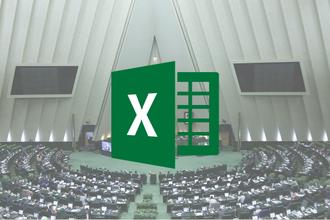جزوه شفافیت در حکومت ضمن توضیح پیرامون تأثیر روندها جدید فناوری و اجتماعی در فرایندهای دموکراسی، شش راهبرد را برای تحقق شفافیت در حاکمیت معرفی مینماید.
| حوزه شفافیت | قوه مقننه، پارلمان | Legislative, Parliament | Scope |
| موضوع | راهنما، آموزشی | Learning, Educational | Subject |
| نوع مطلب | متن | Text | Type |
| زبان | انگلیسی | English | Language |
| منتشر کننده | مؤسسه آسپن؛ بنیاد نایتز | The ASPEAN Institute; Knight Foundation | Publisher |
Government Transparency: Six Strategies for More Open and Participatory Government
چکیده این جزوه، حاوی خلاصهای از این شش راهبرد عبارت است که به شرح زیر میباشد:
Government Transparency: Six Strategies for More Open and Participatory Government
Executive Summary
Over the last several decades, local, state and federal government entities in the United States have steadily moved toward more openness and transparency. By definition, openness and transparency allow stakeholders to gather information that may be critical to their interests and offer channels of communication between stakeholders and elected officials. Aided by legislative mandates and public policy decisions, most government entities are now required to make a minimum amount of information available to citizens, operate in the “sunlight” and not behind closed doors, and actively engage citizens in the policy-making process.
These trends have been fundamentally enhanced by the emergence of an array of information and communication technologies (ICTs)—including broadband Internet access, smartphones, netbooks, and other devices capable of accessing data via the web—that make it much easier for citizens to access and consume government information. In addition, these tools are facilitating a revolution in how citizens interact with government generally and with government data specifically. As a growing number of entities and agencies at every level of government leverage the power and relative ubiquity of the Internet to engage citizens in a variety of functions, from informal rule-making proceedings to formal legislative initiatives, a number of innovative government entities are also tapping into the expertise and innovative spirit of the public by encouraging citizens to create new tools—many of which are enabled by broadband—that transform government data and information into practical tools for use by the general public.
On this point, the Knight Commission makes its Recommendation 4: “Require government at all levels to operate transparently, facilitate easy and low-cost access to public records, and make civic and social data available in standardized formats that support the productive public use of such data.”
This paper examines how and why government at every level, particularly at the local level, should embrace emerging ICT technologies and Web 2.0 and 3.0 tools (e.g., social media and collaboration) to enhance their openness and engage citizens more fully. This paper offers several implementation strategies for Recommendation 4 that focus on enhancing government expertise and transparency, educating citizens regarding the availability and utility of government information and e-government tools, expanding efforts to support greater adoption of broadband Internet access services and devices, and forging public-private-citizen partnerships in order to enhance open government solutions. The purpose of these strategies is to provide a framework for facilitating these objectives and placing government entities on the proper path-way toward the full realization of the benefits of information transparency.
In the end, we offer six strategies for governments to best implement e-government and open-government technologies:
Strategy 1: Convene a national working group of chief information and technology officers to discuss and decide upon technical and operational procedures that mitigate changing environments and circumstances in the open government field. This strategy involves technology leaders from local governments collaborating with a larger association of government technology leaders to develop standards for design, operations, monitoring and performance, and procedures for information management in local governments.
Strategy 2: Create opportunities for developing public good applications that are sustainable through public-private partnerships or contests funded through philanthropic investments. This strategy involves partnerships between governments, citizens, foundations, and other stakeholders to develop applications that drive demand for government content and expand the talent pool available to government technology leaders.
Strategy 3: Establish flexible procurement procedures that allow for more off the-shelf purchasing, easier contracting, and other application solutions for both computers and mobile devices to disseminate government information. This strategy involves the simplification of the current procurement processes for local government leaders, as well as the establishment of a more flexible checklist of products and services that support e-government innovations. This strategy also entails the increased allocation of spectrum to facilitate increased access to government content.
Strategy 4: Improve broadband access at community anchor institutions to ensure that citizens can tap into e-government resources. This strategy involves strengthening community institutions such as libraries, schools, community organizations and community colleges in order to provide Internet access, e-government accessibility and digital literacy training to underserved individuals. Government funding, including the reallocation of Universal Service Fund revenue, is a suggested approach in this strategy.
Strategy 5: Create government content that is relevant and accessible to all populations regardless of ability, language or literacy level. This strategy involves providing e-government data and services in a fashion that is accessible for all people. This includes providing text sizing, audio, language, multimedia options, and interactive tutorials to allow all citizens to use the content. These features should also be promoted by targeted campaigns and marketing activities.
Strategy 6: Promote public-private sector partnerships that enhance skill building, technical expertise opportunities and forward-thinking processes. This strategy involves developing public-private sector partnerships to develop a national curriculum on Information Technology (IT) strategy for government, including research-based guidelines for developing open-government services and training on those guidelines, as well as direct government-private sector partnerships to create and disseminate consumer-oriented applications.
The strategies in this paper are all points that seek to improve the viability of our communities through greater democratic participation and civic engagement. As stewards of our democracy, government leaders must facilitate better access to and use of community information, as well as improve the means for interpretation to enhance the common good. Broadband Internet will continue to enhance these critical elements of our information democracy as more citizens become informed and equipped to participate more fully in the formation of public policy.







